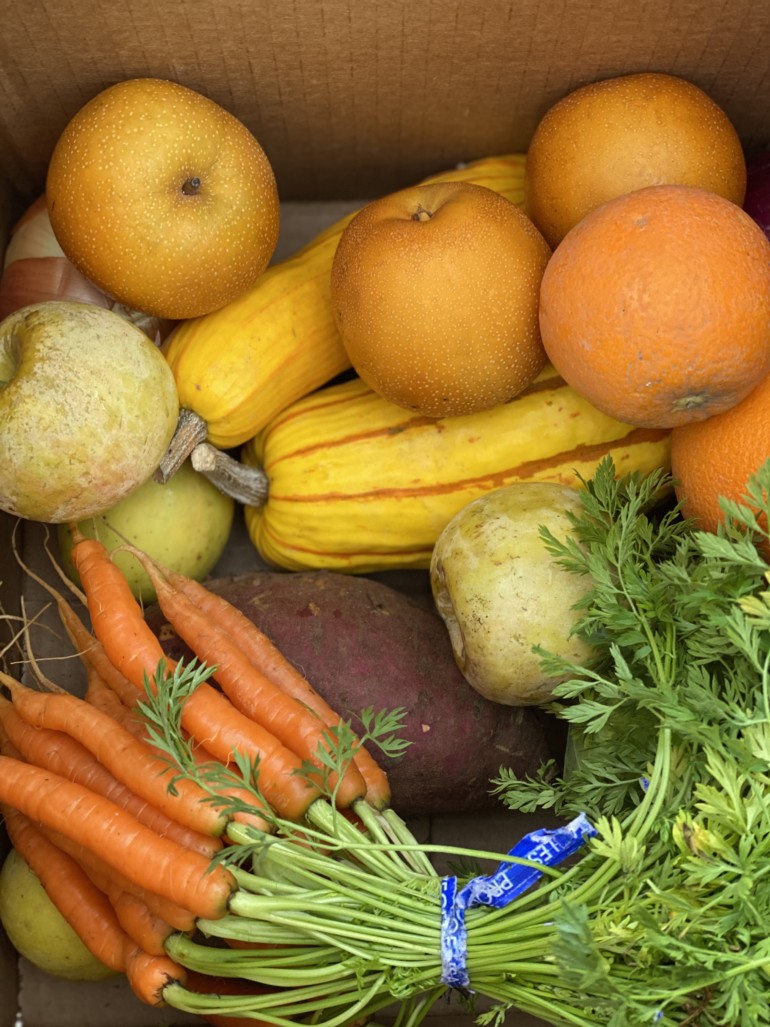If there is one word that businesses like the most — other than “profit” —it might be “consistency.” Consistency impacts everything from momentum and customer loyalty, to future profitability and the ability to retain employees. That truth is no different for farmers who rely on an open marketplace and on the whims of Mother Nature to deliver rain and sun on a schedule that allows their products, their very livelihoods, to thrive. 2020 was a consistency nightmare. Its keyword was “disruption,” knocking people out of work and delaying shipments of everything from toilet paper to earphones. As we move into 2021, farmers and their businesses have adapted new strategies to survive while seeking consistency in this altered landscape for the business of local food.
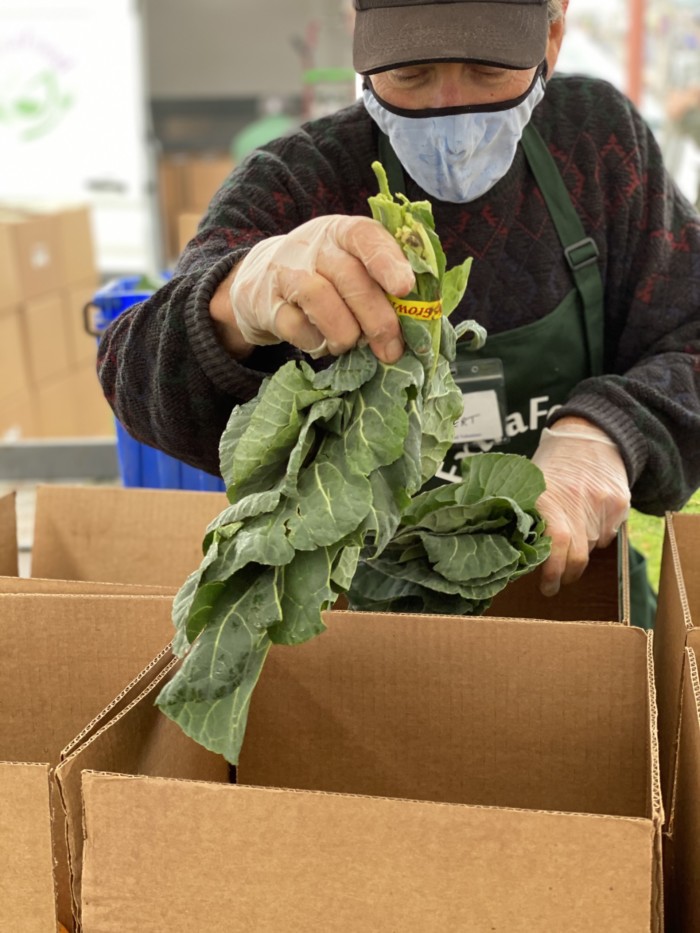
“We’ve been on a really powerful journey since day one,” says Andy Naja-Riese, CEO of the Agricultural Institute of Marin (AIM). “The theme of consistency is critical,” he says, noting that Marin’s farmers markets were operating from Day One in March and have operated on schedule ever since.
A year ago, Naja-Riese launched into the pandemic by advocating to the California Departments of Public Health for all farmers markets — not just the eight that AIM runs in Marin, San Francisco and Alameda counties — to stay open as essential services. He was tasked with ensuring the markets would change to become outdoor grocery stores. That meant eliminating kids’ activities, music, on-site dining, changing the vendor stalls to be “no touch,” as well as implementing the safety protocols we all know by now (social distancing, hand wash stations, etc.). AIM, in conjunction with the Alliance for California Farmers’ Markets, worked on statewide campaigns to the Secretary of Agriculture and others to advocate for open markets. “The response was overwhelmingly positive in the Bay Area to keep the markets open,” Naja-Riese says, and nearly one-hundred percent of Bay Area markets remained consistently open.
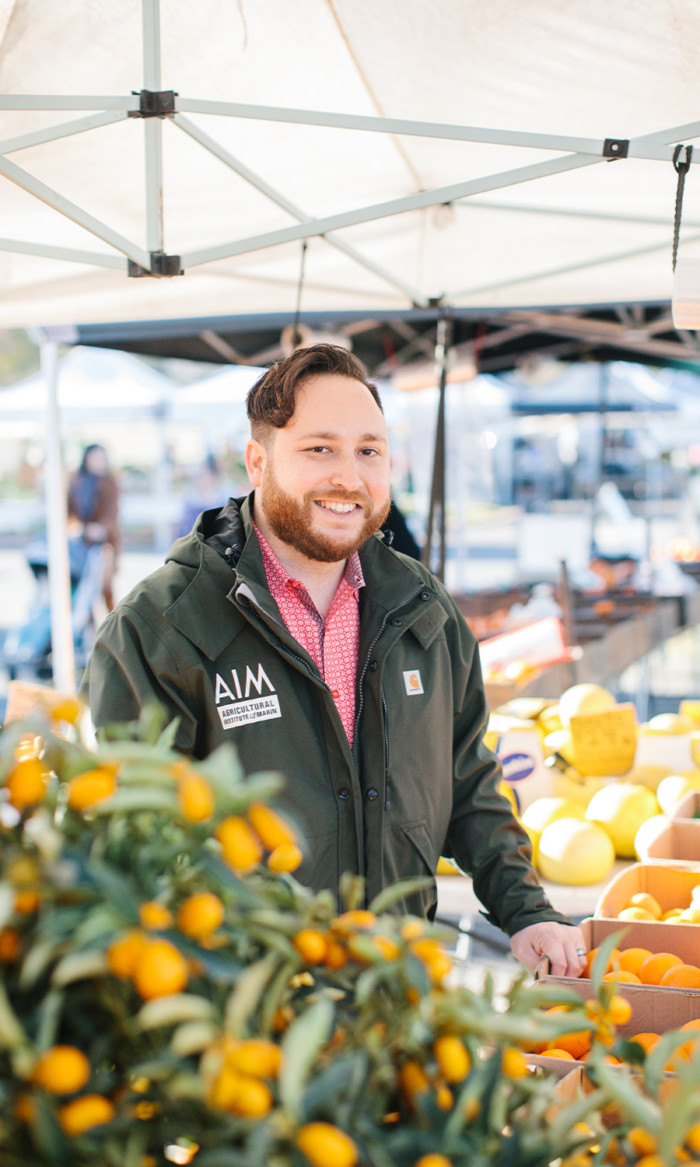
The appeal of open-air environment and its one-step supply chain was undeniable — attracting newcomers to the market, those who suddenly felt safer shopping outdoors, or who leaned into supporting their local community. In those early days, the situation evolved moment to moment. Joanna Normoyle, owner and partner with Abbie Davies of Guru Ram Das Orchards — beloved for their Valencia oranges and other fruits — immediately set up a contactless payment system. “Some people thought we were being overblown,” she said. Then Normoyle got sick and self-quarantined. “It gave us a time to assess the situation,” she says.
Producers, some of whom could no longer be present at the markets or lost a majority of their business with restaurants closed, shifted their focus to Community Supported Agriculture (CSA), another tool to help small farmers thrive. Similarly, AIM pivoted by creating Bounty Boxes, their version of a CSA box. Pre-ordered and picked up curbside at the Thursday market in San Rafael, the box is filled with fruits, veggies and herbs from the markets’ farmers.
Javier Toscano, owner with his father, Francisco, of Toscano Family Farms, instantly lost forty percent of his business when restaurants closed in March. Recognized by chefs for his farm’s consistent availability of fresh herbs like cilantro and sage, as well as peppers and tomatoes that Toscano’s staggered planting schedule ensured, Toscano found he was unsure what to plant during the late spring planting season. “I took a gamble and planted as usual, while thinking positive thoughts,” he says. Though he lost all of his standing orders from restaurants, he credits AIM’s Bounty Boxes with keeping the family business afloat. “The Bounty Boxes and really strong retail at the markets,” Toscano says. “The chefs brought us a lot of business this summer. It made hiring winter staff possible.”
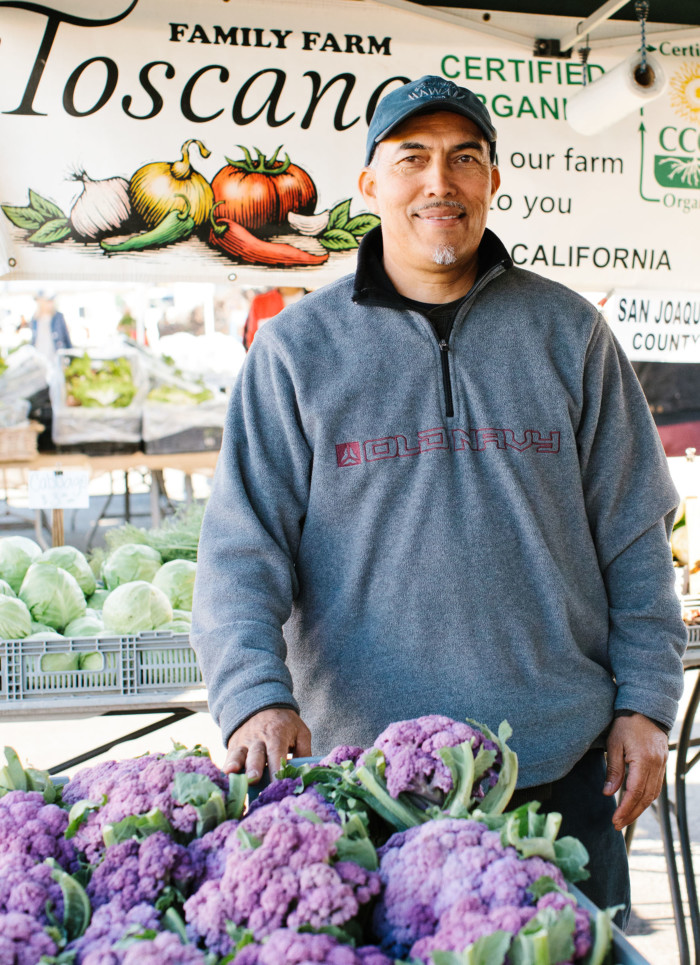
For other consumers, the Bounty Box is a safe alternative to being present at the market. “It is a lifeline for older adults and high-risk citizens who might not be able to get to the market,” says Naja-Riese. Partnerships with Bank of America, the Oakland A’s and Ruth Stroup Insurance, as well as Marin Agriculture Land Trust and the Marin Community Foundation, enabled AIM to offer the boxes at half-price to people who use CalFresh, the California version of the federal Supplemental Nutrition Assistance Program, while ensuring farmers got a market rate for their product. Naja-Riese noted an eighty-seven percent increase of households using CalFresh and EBT (the debit card where CalFresh benefits are loaded) in the past year at AIM markets, as well as a spike in families who have newly qualified for benefits due to job loss or other struggles during the pandemic.
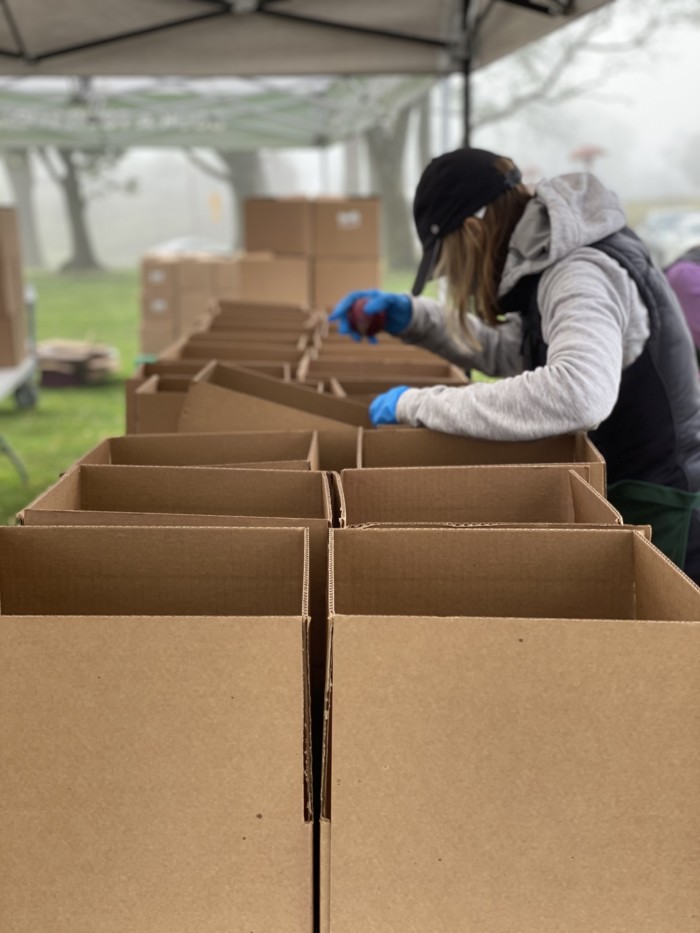
Normoyle, too, credits AIM and the dedication of shoppers to her farm’s ability to stay afloat. “If we had not built the tools to sell directly to consumers, we would have had a much harder time,” she says. “The mechanisms for food distribution, such as the Bounty Box program, provided a really easy way to sell our surplus so we didn’t have to worry about product going unsold,” she says. “That was incredibly useful for a small farm like ours. But it’s the dedicated people who shop every week at the market that are the heroes of the local food movement. They are keeping us alive so we can be here when the restaurants return.”
Customers have made their own pivots, seeking out new ways to shop and bring some of the discovery traditionally reserved for meals at restaurants into the home. Bivalve Dairy had only been at regional markets for a few months when covid hit, losing over fifty percent of their sales of cheese and fresh butter overnight when restaurants closed. They maintained a stand at three farmers’ markets, added the Friday market in Mill Valley, and pivoted into small grocery stores, like Toby’s Feed Barn in Point Reyes Station and Mill Valley Market. “Total sales tripled after that,” says Karen Bianchini Taylor, who runs Bivalve with her husband, John. “We needed to hire more cheesemakers.” California’s extended drought is having its own impacts, pushing the price of hay up more than forty percent this year. Bianchini Taylor is working to build greater resilience to climate change at every level of her farm’s operation, too.
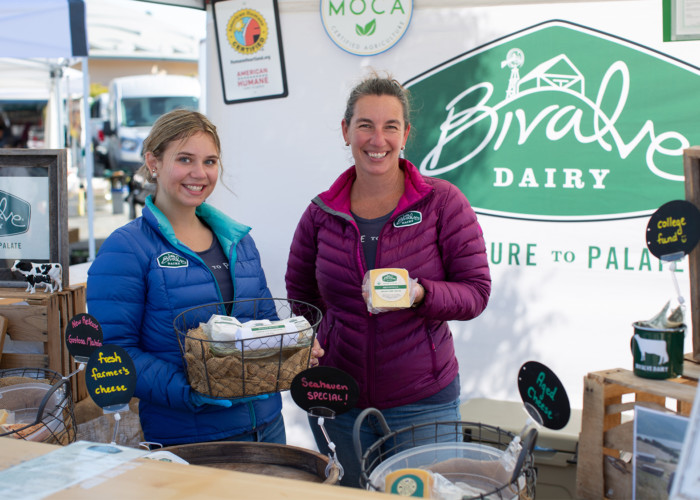
There are other challenges. “Fatigue is the biggest challenge right now,” says Naja-Riese. There have been rule breakers — anti-maskers as well as dog lovers whose pets are unfortunately not permitted at outdoor markets and other food facilities without identification as a service animal. But Naja-Riese is optimistic, focused on regrowth and rebuilding. His office has seen a huge increase in local artisans and food makers who want to join the markets. “We’ve had 30 new food makers, such as Maison Nico and Canteen Meats, who used to work at restaurants or have pivoted to street food come into the markets,” he says. As vaccine rates increase, producers are expected to return in force as well. Naja-Reese understands and is deeply committed to AIM’s responsibility to keep the markets open. “They are a stable and consistent place to sell,” he says.
The Sunday Marin Farmers’ Market at San Rafael’s Civic Center remains somewhat downsized as Covid times continue. Naja-Riese pointed to the August peak when only 196 stands operated versus 220 stands during the same month last year. A return to normalcy is expected. Toscano is seeing an increase in traffic from chefs and others who are discovering his herbs and produce. Bianchini Taylor developed new partnerships with Cowgirl Creamery and Straus Home Ranch for placement for Bivalve’s cheese in cheese boxes shipped around the country via the partners’ well-developed shipping operations. Chef Mike Tusk, a long-time supporter of Guru Ram Das, reached out about a special distribution program in Bolinas. Relationships are reforming. “I had this day at the market recently after a rough holiday season with the restaurants,” Normoyle says, “and I saw so many people — chefs, owners, regulars. It felt the closest to a normal day as I have experienced since this started. I realized we are not going to be beat down. These relationships are still in place and we will weather this.” Can I get an amen? See you at the market.
Farmer’s Markets
Many ranchers and farmers sell direct, meaning no need to go out. The Marin Agricultural Land Trust compiled a list of shelter-in-place food suppliers here or sign up for a Bounty Box here.
- AIM operates the Thursday and Sunday year-round markets at the San Rafael Civic Center.
- Marin Community Farmer’s Markets runs the open-air markets in the parking lot at Corte Madera Town Center on Wednesdays and in the CVS parking lot in Mill Valley on Fridays, year-round.
- The seasonal Point Reyes Farmers’ Market operates June–October next to Toby’s Feed Barn in Point Reyes Station.
- Tomales Farmer’s Market is hosting weekly pickups of local produce.
- Agricultural Community Events Farmer’s Markets runs markets in Sonoma and Marin, including the seasonal markets in downtown Novato and Fairfax.
- The Marin Country Mart hosts a Saturday market year-round.
How to Help
For more ways to support local businesses, go here.
For more on Marin:
- Political Strategist, Organizer, Author and Marin Native Alicia Garza on What it Takes to Create Change
- This Month in Marijuana: What We’re Eating, Smoking, Dropping and Drinking in January
- Tackle Home Organizing For Real This Year — 3 Bay Area Professional Organizers Share Their Best Tips
 Christina Mueller is a long-time Bay Area food writer. She hails from the East Coast and has spent way too much time in South America and Europe. She discovered her talent as a wordsmith in college and her love of all things epicurean in grad school. She has written for Condé Nast Contract Publishing, Sunset, and the Marin Independent Journal, among others. She volunteers with California State Parks and at her child’s school, and supports the Marin Audubon Society, PEN America, and Planned Parenthood. When she is not drinking wine by a fire, she is known to spend time with her extended family.
Christina Mueller is a long-time Bay Area food writer. She hails from the East Coast and has spent way too much time in South America and Europe. She discovered her talent as a wordsmith in college and her love of all things epicurean in grad school. She has written for Condé Nast Contract Publishing, Sunset, and the Marin Independent Journal, among others. She volunteers with California State Parks and at her child’s school, and supports the Marin Audubon Society, PEN America, and Planned Parenthood. When she is not drinking wine by a fire, she is known to spend time with her extended family.

